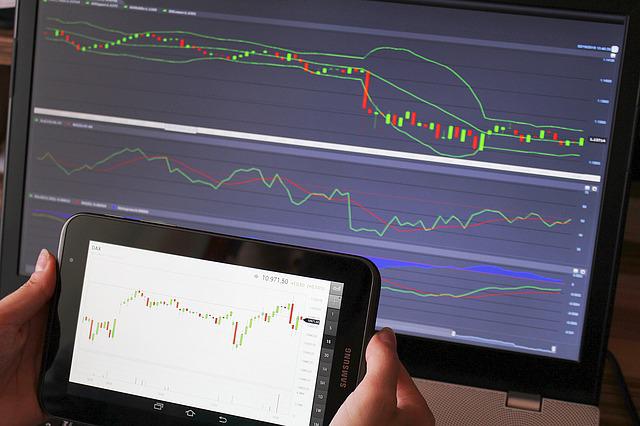It’s already been ten years since the European Market Infrastructure Regulation (EMIR) came into effect. With the cost of living soaring, markets down, and investors tense. The possibility of a financial crash might be around the corner. Thankfully, EMIR can help minimize potential problems.
The regulation was put in place by the European Union (EU) to reduce systemic, counterparty, and operational risk. Also, to increase the transparency across the over-the-counter (OTC) derivatives market. This article will explain what EMIR is and how it helps to protect the financial system.
Why Is EMIR Important?
EMIR’s creation was a preventative measure to counter any fallout from a severe economic crisis. For example, in 2008, when the Lehman Brothers went bankrupt. The knock-on effect of this disaster was catastrophic. It was clear that counter-measures were necessary to stop it from happening again.
EMIR – Regulations And Risk
The financial crisis in 2008 laid bare the interconnectedness of the OTC derivatives market. There were three main problem areas:
- The sprawling network meant there was a counterparty credit risk of default because of all the connections and market participants.
- Regulators did not have sufficient oversight of global positions. This lack of transparency meant they could not detect risk areas in the financial system.
- There was weak risk management overall and also for bespoke transactions. This risk could lead to realized losses in times of market stress.
A Regulatory Response To Help The Industry
No business can underestimate the importance of EMIR as a regulatory requirement. EMIR was a regulatory response to the risks that had emerged from an interconnected market. Nobody wanted to see the negative “domino effect” again. Also, if regulators wanted to regulate correctly, they had to have more transparency.
The Requirements Of EMIR
The introduction of EMIR meant requirements were more stringent in several areas:
- Risk mitigation and margining
- Clearing
- Reporting
Any entity qualifying for EMIR must report every derivative contract they enter to a trade repository (TR). Trade repositories play a central role in enhancing the transparency of the derivatives markets. Also, they can help reduce the risk and push towards financial stability.
EMIR requires risk management strategies that match EMIR’s high standards. These strategies must include operational processes and any margining related to bilateral OTC derivatives. EMIR is similar to the Dodd-Frank Act in the United States, which helps prevent future financial crises.
EMIR also applies to trades that are not cleared by a central counterparty. Entities that qualify in this area must submit all OTC derivatives subject to a mandatory clearing obligation for review. Counterparties must also file reports wherever they enter into derivatives transactions, in the European Economic Area or elsewhere.
EMIR Reporting Requirements
The reporting requirements of EMIR are strict and thorough. Here are a few examples of areas you need to cover when you create your reports:
- Reports are constructed in a set way and made for particular circumstances
- The reports need to include action and event types and demonstrate the logic
- Reporting requirements in the case of delegation/ allocating responsibility
- Understanding the population of specific sections of reporting fields
- The correct population of fields for different reporting scenarios and products
What Is The EMIR Refit For 2022?
An amended version of the EMIR regulation, usually referred to as the EMIR Refit, was made in 2019. Proposed by the European Commission, the review aimed to minimize the compliance burden on small financial and non-financial counterparties. The implementation steps started in May 2019 and will finish in Q4 2023.
Technical Standards Of The EMIR Refit
The European Securities and Market Authority (ESMA), the EU’s securities markets regulator, published the final report of the EMIR Refit in December 2020. It covered data reporting for TRs and procedures to reconcile and validate data. Also, access for authorities to data and registration of TRs.
Keeping On Top Of EMIR Regulation Changes
The EMIT refit intended to amend and simplify the infrastructure of the European markets. However, some companies have had to introduce significant changes. For example, reporting standardization for the IS0 20022 standard and a substantial increase in reporting fields from 129 to over 200.
While these might already seem like significant changes, there was still more for companies to do. When it came to reporting, more granular reporting was necessary to appease the regulators. Plus, companies now have to tell the competent national authority if they have a failure with the reporting process.
ESMA’s Recent Proposal To Change The Clearing Threshold For EMIR
Regulations are forever changing, and on 3rd June 2022, (ESMA), the EU’s securities markets regulator, released a Final Report on EMIR. It presents draft regulatory technical standards (RTS) that will change the commodity derivatives clearing threshold (CT).
ESMA has sent the proposal to the EU, requesting that the clearing threshold increase from EUR 3 billion to EUR 4 billion. The report follows a discussion paper on CTs that ESMA published on 21st November 2021. The threshold increase is to alleviate the impact of energy prices on non-financial counterparties temporarily.
Forward-Thinking Companies Are Boosting Their Compliance
EMIR is a fine example of how regulations can change and affect a company’s compliance obligations. With so much to be done, companies are now embracing digital solutions to help save them crucial time, money, and stress. If your business struggles with compliance requirements, it could be a sensible solution for the future.
